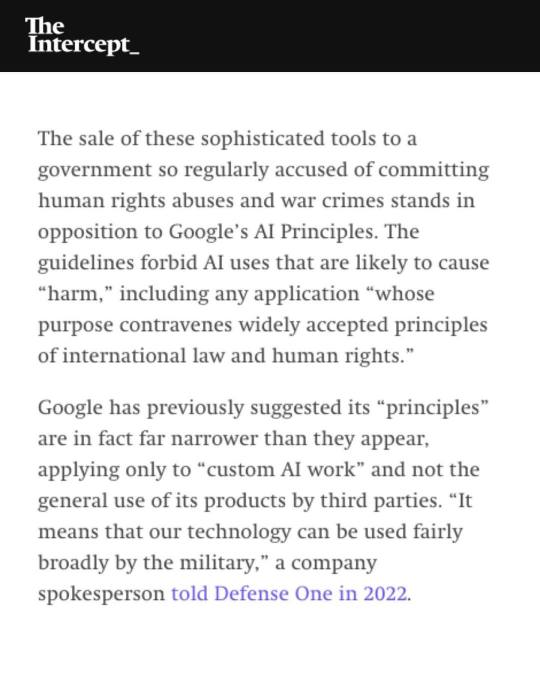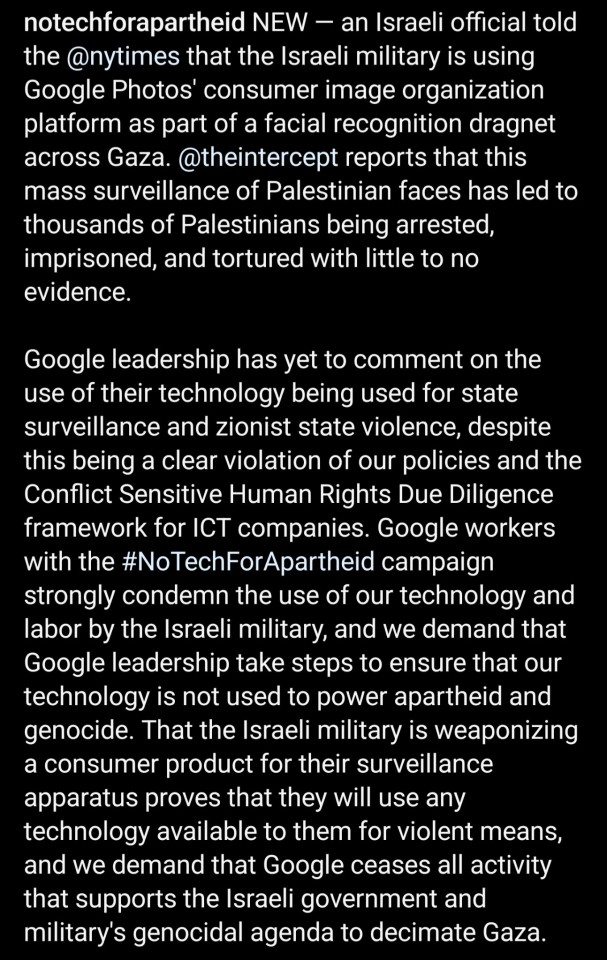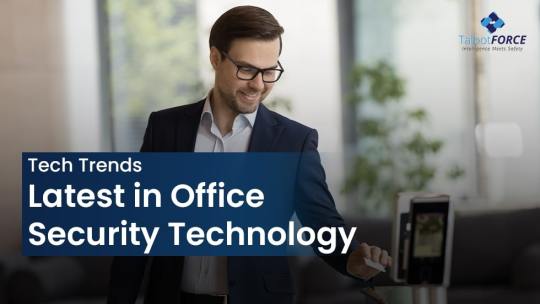#facial recognition systems
Text

Face Recognition Entry System UAE
Face Recognition Entry System Dubai
Face Recognition Entry System Abu Dhabi
Face Recognition Entry System Sharjah
Face Recognition Entry System Alain
Face Recognition Entry System Saudi Arabia
Face Recognition access control attendance system
Face Recognition Access Control Attendance System Dubai
Face Recognition Access Control Attendance System Abu Dhabi
The face Recognition access control attendance system uae
face recognition attendance system dubai
face recognition attendance system abu dhabi
face recognition attendance system Sharjah
face recognition attendance system Ajman
facial recognition software uae
facial recognition software abu dhabi
facial recognition software in sharjah
facial recognition software Ajman
Biometric & Time Attendance System in Dubai, UAE
Tektronix Technology presents facial recognition software in Dubai Abu Dhabi
#facial recognition access control#facial recognition devices#facial recognition software#facial recognition software abu dhabi#facial recognition software uae#facial recognition software sharjah#facial recognition software ajman#facial recognition software alain#facial recognition systems uae#facial recognition systems in sharjah#facial recognition systems#Face Recognition Entry System uae#Face Recognition Entry System abu dhabi#Face Recognition Entry System sharjah#Face Recognition Entry System bur dubai#Face Recognition Entry System in alain
0 notes
Text
Ideal Innovations, Inc. Breaks Barriers in Facial Identification Discipline

This is where Ideal Innovations, Inc (I-3) comes in. I-3 has decades of experience, a strong foundation of expertise and enduring relationships with government agencies—which allow this firm to maintain an unparalleled position of leadership in the Facial Identification industry. The key to I-3’s success lies in its ability to train local and state law enforcement agencies, the military, and corporate security divisions in how to analyze data generated by Facial Recognition systems. I-3 is also working with officials at all levels of government to codify protocols, guidelines, and best practices in local, state and federal law; and to establish a certification process.
0 notes
Text










#facial recognition#facial recognition software#boycott israel#boycott google#google software is being used to help target and kill Palestinians#google#apartheid#save palestine#ethnic cleansing#israel is an apartheid state#seek truth#free palestine 🇵🇸#genocide#illegal occupation#israel is committing genocide#israeli war crimes#project nimbus#google photos#israeli hit list#israeli war criminals#israel is a terrorist state#surveillance state#mass surveillance#even AI is racist with facial recognition systems being notoriously unrealiable for people with darker skin tones#no tech for apartheid#human rights violations#conflict sensitive human rights due diligence#seems like that can be bypassed if the money is good enough#dystopian nightmare
72 notes
·
View notes
Text
👹👹👹
#smart cities#smart cars#smart TV#silly people#lockdowns#tracking system#facial recognition#enslavement of humanity#end of privacy#communist regime#one world order#globalisation#one world government#you will own nothing#speak up#standup#speaktruth#fight for justice#crimes against humanity#wwg1wga#please share
18 notes
·
View notes
Text
If we want to have productive conversations about ‘AI’ we need to start thinking about what we’re actually talking about.
AI is a catch-all term that can apply to almost any situation where a computer is allowed to make decisions. Mid journey is a generative image platform, character ai is a large language model, facial recognition is not either of those things, machine learning is neither of those things.
‘AI’ isn’t something you can fight because you’d have to argue for shit like un-automating light houses and removing all enemy programming in video games because those are also ‘Artificial intelligence’. This all isn’t to say that AI is amazing and great, but it is to say that ‘AI’ is almost a totally useless term when you’re trying to talk about specific technologies that contribute to systemic inequality.
#.txt#like why the fuck are we bringing up mid journey or dalle when we’re talking about racist facial recognition systems?#AI is a term that can apply to technologies that are completely unrelated#and so railing against ‘AI’ just makes you sound like a Scrooge who’s afraid of new tech because it’s so vague and stupid#I hate advertising algorithms I hate recommendation algorithms I hate facial recognition and the removal of privacy from our daily lives#but that has nothing to do with midjourney ruining the sacredness of art or whatever dumb shit y’all are ok
2 notes
·
View notes
Text
Embracing the Future: Facial Recognition in Corporate Offices
In today’s technologically advanced world, corporate offices are continually seeking innovative solutions to enhance efficiency, security, and employee satisfaction. Facial recognition technology has emerged as a promising tool, especially in the domains of attendance tracking, time and attendance management, and payroll processing. Here, we explore current trends, challenges, functionality, benefits, and solutions related to facial recognition systems in corporate settings.
Current Trends in Facial Recognition Technology
Contactless Solutions: With heightened awareness of hygiene, contactless systems are in demand. Facial recognition offers a hands-free method to authenticate employees, minimizing physical contact.
Improved Accuracy: Advanced machine learning algorithms are continuously enhancing the accuracy and reliability of facial recognition systems, reducing errors and increasing trust.
Mask Detection: The capability to recognize faces with masks has become crucial, especially post-pandemic. Systems are being adapted to accurately identify individuals even when partially covered.
Anti-Spoofing Measures: To counteract spoofing attempts using photos or videos, modern systems incorporate advanced anti-spoofing technologies, ensuring only live faces are recognized.
Privacy and Regulation: As privacy concerns rise, systems are being developed to comply with stringent data protection regulations like GDPR and CCPA, ensuring responsible usage of biometric data.
Integration with AI and Analytics: Facial recognition is being integrated with AI to provide insightful analytics on employee attendance, punctuality, and even mood analysis, aiding in better management decisions.
Cloud-Based Solutions: Cloud-based facial recognition systems offer scalability and remote accessibility, making it easier to manage attendance data across multiple locations.
Customization and Flexibility: Businesses are seeking customizable solutions that can be tailored to their specific needs, ensuring seamless integration with existing systems.
Challenges and Issues in Corporate Offices
Privacy Concerns: Employees may be wary of how their biometric data is used and stored, raising concerns about surveillance and misuse of personal information.
Legal and Regulatory Compliance: Navigating the complex landscape of biometric data laws and ensuring compliance can be challenging for organizations.
Accuracy in Varied Conditions: Ensuring high accuracy in different lighting conditions, angles, and when faces are partially obscured remains a significant challenge.
Security Vulnerabilities: Facial recognition systems can be susceptible to spoofing and hacking, necessitating robust security measures to protect sensitive data.
Integration Complexity: Integrating facial recognition systems with existing HR and payroll software can be complex and may require significant customization.
User Acceptance: Gaining acceptance and trust from employees regarding the use of facial recognition for attendance tracking can be difficult.
Cost of Implementation: The initial cost of deploying facial recognition systems, including hardware and software, can be prohibitive for some organizations.
How Facial Recognition Attendance Systems Work
Enrollment: Employees are enrolled by capturing their facial images, which are then converted into unique faceprints stored in a database.
Capture Attendance: As employees arrive, their faces are scanned by a camera. The system detects and aligns the face for accurate recognition.
Feature Extraction: Key facial features are extracted to create a faceprint that is compared against stored templates.
Matching: The system matches the extracted faceprint with the database to verify the identity.
Attendance Recording: Upon a successful match, the system logs the attendance with a timestamp in the centralized database.
Real-Time Feedback: Employees receive instant feedback confirming their attendance has been recorded.
Data Management: Attendance data is integrated with time and attendance management systems, providing comprehensive records for payroll processing.
Benefits of Facial Recognition Systems
Automated Attendance Tracking: Reduces administrative overhead by automating the attendance recording process.
Contactless Operation: Enhances hygiene and safety by minimizing physical contact.
Accurate Timekeeping: Ensures precise tracking of working hours, reducing errors associated with manual entry.
Elimination of Time Theft: Prevents buddy punching and other forms of attendance fraud.
Real-Time Monitoring: Provides managers with real-time data on employee attendance patterns.
Efficient Payroll Management: Integrates seamlessly with payroll systems, automating wage calculations based on accurate attendance data.
Enhanced Security: Reduces the risk of unauthorized access with high-precision facial recognition.
Employee Satisfaction: Improves overall employee experience by simplifying the attendance process and ensuring timely, accurate payroll.
Solutions for Corporate Offices
Time and Attendance Management
Comprehensive Integration: Integrate facial recognition systems with existing HR and time management software to streamline operations.
Flexible Scheduling: Accommodate various work schedules, including remote and shift-based work, with accurate time tracking.
Compliance Tracking: Ensure adherence to labor laws and company policies regarding working hours and breaks.
Payroll Management
Automated Calculations: Utilize accurate attendance data to automate payroll calculations, minimizing errors.
Timely Payments: Ensure employees are paid on time, enhancing satisfaction and reducing disputes.
Cost Efficiency: Reduce administrative costs and the risk of payroll fraud through automated processes.
Detailed Reporting: Generate comprehensive reports on payroll expenses and attendance metrics for informed decision-making.
Regulatory Compliance: Maintain compliance with tax laws and payroll regulations, reducing the risk of penalties.
By addressing these challenges and leveraging the benefits, facial recognition technology can revolutionize attendance tracking, time and attendance management, and payroll processing in corporate offices, leading to more efficient and secure workplace operations.
#facial recognition technology#facial recognition#facial recognition solution#thirdeye ai#ai-based facial recognition system#face recognition application
0 notes
Text
#accesscontrolsystemuae #accesscontrolsystemsaudiarabia #accesscontrolsystemriyadh #accesscontrolsystemsupplier #accesscontrolsupplieruae #accesscontrolsupplieruae #accesscontrolsupplierinabudhabi #accesscontrols
Access Control System Dubai
Access Control System UAE
Access Control Supplier in Dubai
Access Control Systems
Access Control System in Sharjah
Access Control With Face recognization
Access Control Systems Saudi Arabia
Access Control System Riyadh
Access Control System Qatar
Access Control System Abu Dhabi
Access Control Solutions UAE
Access Control Systems in Alain
#access control system abu dhabi#access control system saudi arabia#access control system in saudi arabia#access control system supplier in abu dhabi#access control system supplier in sharjah#access control system supplier in ajman#access control system supplier alain#access control system supplier oman#access control system supplier qatar#access control system supplier saudi arabia#access control system supplier in saudi arabia#access control system with facial#access control system with facial recognitions#access control system uae#access control systems dubai#access control systems abu dhabi#access control system supplier in uae#access control supplier in sharjah
0 notes
Text
Facial recognition systems need a database or a pre-recorded data set to compare captured images and identify faces. A complete high-end configuration unit is installed in the institute and the data capturing process is initiated. The camera mounted with the machine captures and processes the images of students with various angles and qualities along with the basic identification details for further processing.The Image is processed in this way to take care of image quality & other factors.
0 notes
Text
typical airport experience
- woman wearing a hijab gets pulled aside for "random screening" (along with the black man and small child accompanying her) ✔️
- my backpack gets pulled aside for "routine check" (my beefy ass gaming laptop was too cool for the machine) ✔️
- they ask me about the large bottle of a liquid, class III controlled drug i'm carrying ❌
- my phone and wallet are pulled aside to be checked ???? ✔️
- overpriced airport food is mid ✔️
- seats on airplane are too small to fit my fat ass ✔️
#anyway traveling is fun but capitalism and the patriot act ruin any enjoyment i get out of it#anyway. someone complemented my boots so a win is a win.#also these facial recognition checkin systems are SO DYSTOPIAN. i opted out and im wearing a mask so i think im fine but STILL#speaking of dystopian. saw one of those 'just walk out' amazon stores. jesus fucking christ.
0 notes
Text
#free shiping#360 video#360 Auto Face Tracking#Facial recognition#Face detection#Auto-tracking technology#360-degree tracking#Facial tracking system#Automatic face tracking#Face recognition software#Facial motion tracking#Real-time face tracking#360-degree facial tracking#Facial feature tracking#Facial movement detection#Face tracking algorithm#360-degree face detection#Face position tracking#Auto face capture#Face tracking camera#Facial tracking technology#AI face tracking#Automated face tracking#Face motion detection#360-degree face recognition#Face tracking capabilities#Facial tracking software.
0 notes
Text
Elevate your public transport solutions with the Allwinner T113-i SoM! Power up your bus payment machines with NFC compatibility, facial recognition, and advanced processing capabilities. Upgrade to seamless and efficient payments today!
#Intelligent Bus Payment Machine#Allwinner T113i System on Module#NFC Card Reader#Facial Recognition#Public Transport Payment
0 notes
Text

#facial recognition access control#facial recognition devices#facial recognition devices abu dhabi#facial recognition devices in ajman#facial recognition devices in sharjah#facial recognition devices bur dubai#facial recognition devices in alain#facial recognition devices sharjah#facial recognition systems#facial recognition software
0 notes
Text
issuu
#artificial intelligence in the beauty industry#salon booking environment#facial recognition technologies#AI-powered appointment management systems#salon booking app development company#AR in virtual salon consultation#top mobile app development company#best mobile app development company#ui ux design services#ui ux design services company
0 notes
Text
Tech Trends: The Latest in Office Security Technology
Imagine a world where visitors breeze through check-in, their faces instantly recognized and verified by a system. This is the promise of facial recognition in visitor management systems (VMS). This technology uses algorithms to map unique facial features, streamlining entry and boosting security.

For visitors, it's a touchless, convenient experience. No more waiting, filling forms, or carrying badges. Simply approach the kiosk, and the system grants access if authorized. For organizations, it's a security upgrade. Facial recognition helps identify unauthorized individuals, track visitor movement, and even detect known threats.
0 notes
Text
Biometrics is the most suitable means of identifying and authenticating individuals in a reliable and fast way through unique biological characteristics. Unlike traditional authentication methods like passwords or PINs, which can be easily forgotten or stolen, biometrics relies on inherent and distinctive attributes of a person. These attributes are difficult to replicate, making biometric authentication a powerful tool for ensuring the integrity and security of sensitive information, physical access control, and various other applications.
#biometricauthentication#biometricstechnology#biometrics#limitlesstech#biometricauthenticationsystem#futureofbiometrics#biometricauthenticationtechnology#facialrecognitiontechnology#biometricdata#biometricdevice#biometricsystem
#biometrics technology#the future of personal security#biometrics authenticaton the future of personal security#LimitLess Tech 888#biometrics#facial recognition#biometric authentication#biometrics authentication#biometric authentication system#the future of biometrics#the future of biometric authentication#biometric#biometric authentication technology#facial recognition technology#biometric authentication project#future tech#biometric device#biometric system
0 notes
Text
Revolutionizing Field Force Management with Facial Recognition Technology
In today’s fast-paced business landscape, companies are constantly seeking innovative solutions to optimize their field operations and enhance productivity. One such groundbreaking technology that is reshaping the way field force management is conducted is facial recognition. By integrating facial recognition technology into field force management systems, organizations can unlock a multitude of benefits, ranging from improved security and efficiency to enhanced customer satisfaction.
Enhancing Security and Authentication
Facial recognition technology offers a highly secure method of authentication, allowing field workers to access critical systems and data with just a glance. Traditional methods of identity verification, such as passwords or ID cards, are prone to security breaches and can be cumbersome for field workers who are constantly on the move. With facial recognition, employees can quickly and securely authenticate themselves, reducing the risk of unauthorized access and ensuring that only authorized personnel can perform tasks or access sensitive information.
Streamlining Time and Attendance Tracking
Gone are the days of manual timekeeping or relying on cumbersome time clocks. Facial recognition technology simplifies the time and attendance tracking process by accurately recording when field workers clock in and out of their shifts. By capturing employees’ faces as they start and end their workday, organizations can automate the attendance tracking process, eliminate time theft, and ensure accurate payroll processing.
Improving Task Allocation and Verification
Assigning tasks to field workers can be a complex process, especially when considering factors such as skill sets, availability, and proximity to job sites. Facial recognition technology simplifies task allocation by ensuring that the right person is assigned to the right job. Field workers can use facial recognition to verify their identity before starting a task, providing an additional layer of authentication and accountability.
Enhancing Safety and Compliance
Ensuring the safety and compliance of field workers is paramount for organizations operating in industries such as construction, utilities, and transportation. Facial recognition technology can help enforce safety protocols and ensure compliance with regulations by monitoring workers’ adherence to safety guidelines and equipment requirements. For example, facial recognition can detect whether workers are wearing required safety gear, such as helmets or uniforms, before they begin their tasks, thereby mitigating the risk of accidents and injuries.
Enabling Remote Supervision and Support
Supervising field workers can be challenging, especially when they are spread across various locations. Facial recognition technology enables supervisors or managers to remotely monitor field workers using cameras or mobile devices. By leveraging facial recognition-enabled surveillance systems, organizations can verify workers’ locations, observe their activities in real-time, and provide assistance or guidance as needed, thereby improving operational efficiency and productivity.
Conclusion
Facial recognition technology is revolutionizing the way organizations manage their field operations, offering a multitude of benefits in terms of security, efficiency, and compliance. By embracing facial recognition technology as part of their field force management strategy, companies can streamline their operations, enhance safety and compliance, and ultimately deliver a superior experience to their customers. As the technology continues to evolve, organisations that leverage facial recognition will undoubtedly gain a competitive edge in today’s dynamic business landscape.
#facial recognition system#facial recognition#facial recognition ai#ai based facial recognition#thirdeye ai#facial recognition tech#facial recognition technology
0 notes